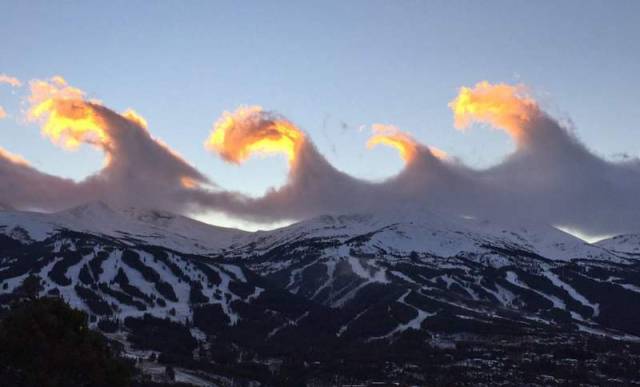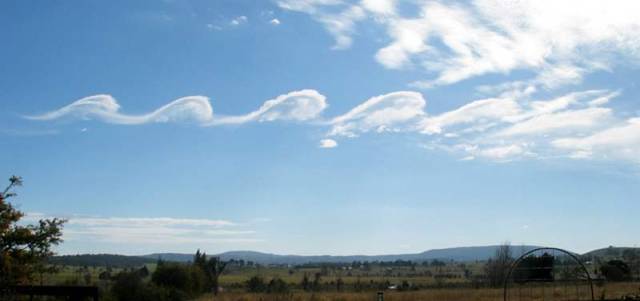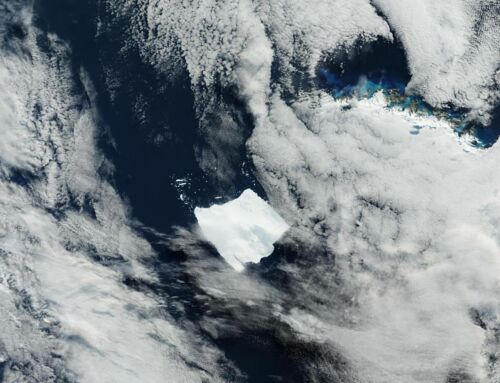Looking like ocean waves, these impressive Kelvin-Helmholtz clouds, captured by Breckenridge Resort in Colorado.
The Kelvin-Helmholtz instability creates a series of breaking ocean waves, that curl over themselves continually.
Image Credit: Breckenridge Resort via Twitter
The Kelvin–Helmholtz instability (after Lord Kelvin and Hermann von Helmholtz) can occur when there is velocity shear in a single continuous fluid, or where there is a velocity difference across the interface between two fluids. An example is wind blowing over water: The instability manifests in waves on the water surface. More generally, clouds, the ocean, Saturn’s bands, Jupiter’s Red Spot, and the sun’s corona show this instability.
The theory predicts the onset of instability and transition to turbulent flow in fluids of different densities moving at various speeds. Helmholtz studied the dynamics of two fluids of different densities when a small disturbance, such as a wave, was introduced at the boundary connecting the fluids.
via gizmodo







Leave A Comment